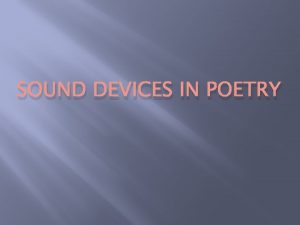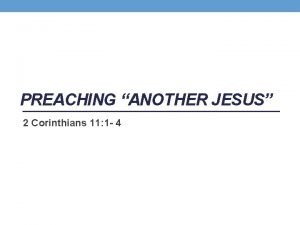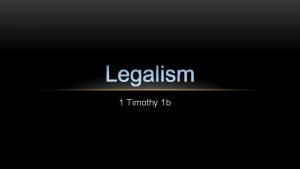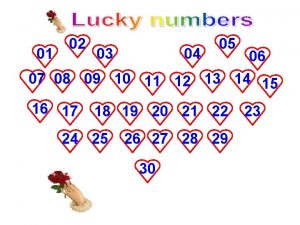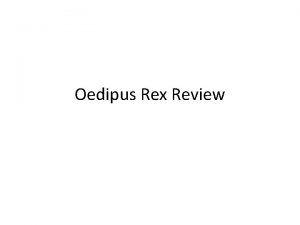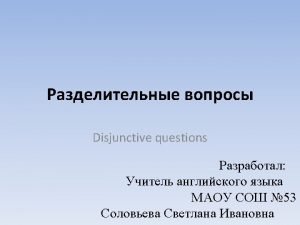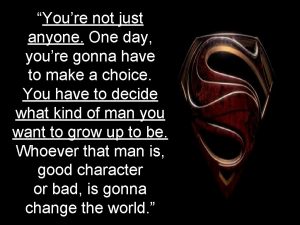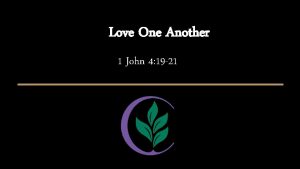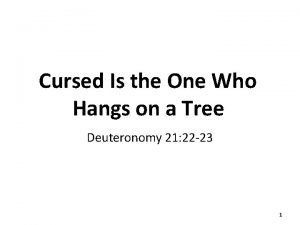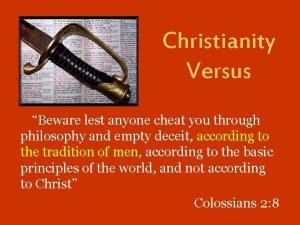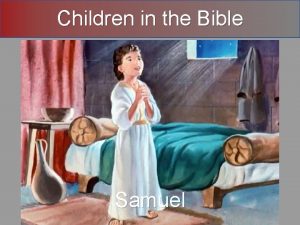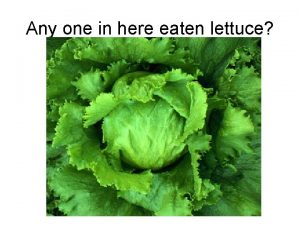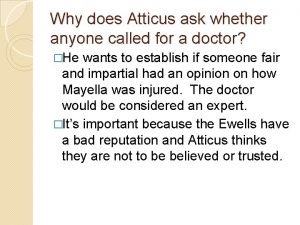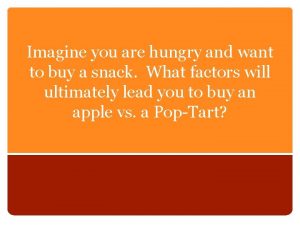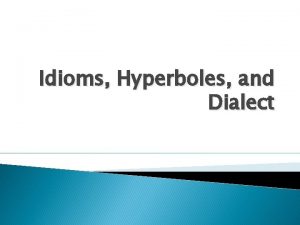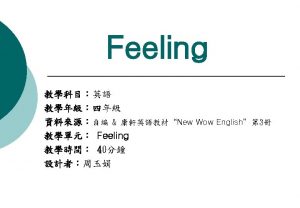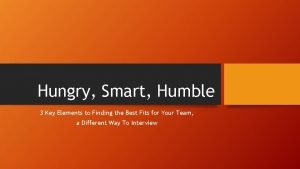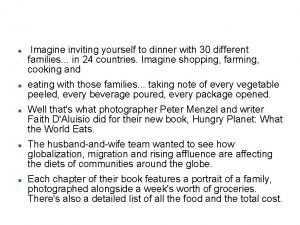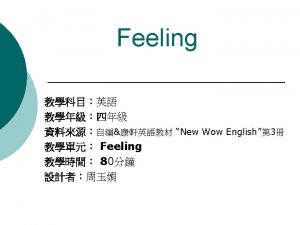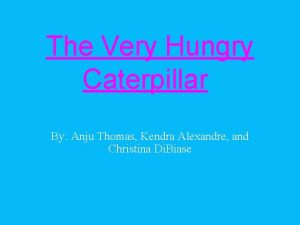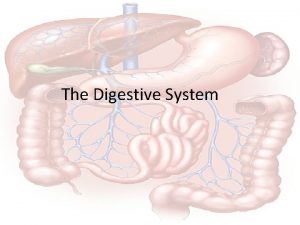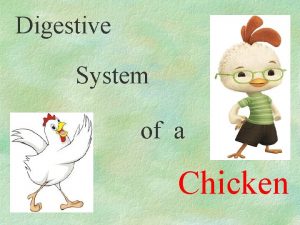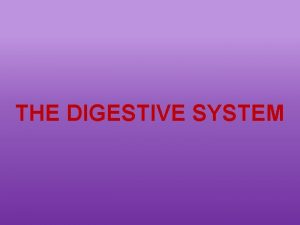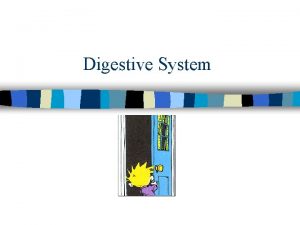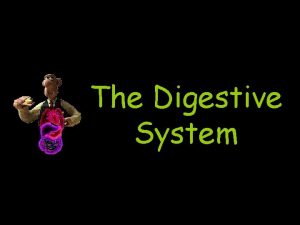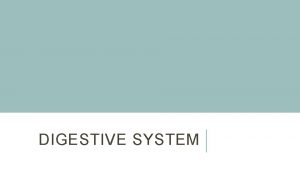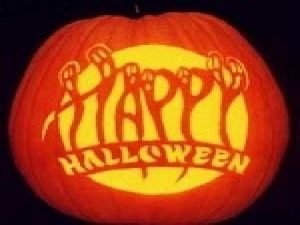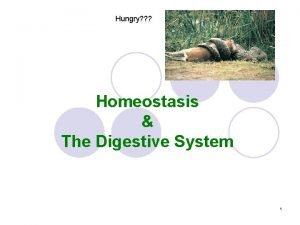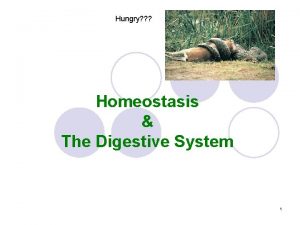The Digestive System The Digestive System Hungry Anyone










































- Slides: 42

The Digestive System

The Digestive System • Hungry Anyone?

Digestion • The process of _______food into small ______ so that they can be ______ into the blood. • Digestive Tract organs involved: – Mouth—teeth and tongue – ______ – Stomach – ________ – Rectum and anus

The Digestive System

Digestion • Two types of digestion: 1. Mechanical digestion— _____________________________________ There is no breaking of any chemical bonds! 2. Chemical Digestion— _____________________________________

Digestion • “Goals” of chemical digestion: – Carbohydrates monosaccarides (_____) – Protein _______ – Fat fatty acids • Absorption—the ______ of nutrients (glucose, amino acids, fatty acids) from the gut into the ______

Fun Facts • Chewing food takes from 5 -30 seconds • Swallowing takes about 10 seconds • Food sloshing in the stomach can last 3 -4 hours • It takes 3 hours for food to move through the intestine • Food drying up and hanging out in the large intestine can last 18 hours to 2 days!

Fun Facts • Americans eat about 700 million pounds of peanut butter. • Americans eat over 2 billion pounds of chocolate a year. • In your lifetime, your digestive system may handle about 50 tons of food!!

Enzymes in Digestion • Chemical digestion happens because of enzymes • Enzyme—_________________.

Enzymes in Digestion • Amylase—an enzyme produced by ____ near the _____ – Breaks down complex carbohydrates (pasta, whole grain breads) into _________(glucose). • ______—an enzyme that is produced in your ______ – Helps in the chemical reactions that break down proteins. • Many other enzymes secreted by the pancreas that help to break down proteins, carbs, and fats.

Checkpoint! 1. How long is the small intestine? A. B. C. D. 12 feet 40 feet 10 feet 25 feet 2. Name three organs involved in digestion.

Checkpoint! 3. Chewing a piece of steak is an example of ______. A. B. C. D. Chemical digestion Mechanical digestion Absorption None of the above. 4. Chemical digestion includes breaking ____ and using _____ to break down food. A. chemical bonds, enzymes B. Food particles, enzymes C. Glucose, protein

Checkpoint! 5. Proteins are broken down into _____ before they can be absorbed. A. Sugars B. Fatty acids C. Amino acids D. Glucose 6. The enzyme produced in the mouth to break down carbohydrates. A. Pepsin B. Amylase C. Lipase D. Trypsin


The Mouth • _______—purpose is to rip, grind, and mash food so it fits down our esophagus • Tongue—pushes food around mouth to make chewing and swallowing easier • ________—deliver saliva to the mouth. This fluid contains pancreatic enzymes to start breaking down carbohydrates.

Esophagus • A muscular canal running from the ____ to the stomach. • Peristalsis is the name used to describe the _______ and ____ actions of this muscle to push food down into the stomach.

Stomach • Muscular “____” to store, mix, digest, and empty food • _____ digestion: peristaltic waves contract throughout the stomach to ___ and _______ food • _____ digestion: specialized cells in the walls of the stomach secrete______ • HCl also helps to destroy ____ in food

Stomach • Stomach also produces ______ which makes food slippery and ____ the stomach • Two _____ to help keep contents inside stomach – _______ sphincter—top of stomach – ______ sphincter—bottom of stomach • By the time food moves through your stomach, it is turned into a thin, watery liquid called_____


Small Intestine • First part of small intestine is called______—most digestion takes place here • Bile from your ____ is added into the duodenum • Acid from your stomach makes fat particles float to the top of the chyme • Bile _______ up the large ____ particles to help begin digesting the fats

Small Intestine • ____ digestion of carbs, proteins, and fats occurs when digestive solution from the _____ is mixed in • The solution contains ____ and also bicarbonate to help ____ the stomach acid. • _____ takes place in the ______ of the small intestine



Small Intestine • ______ are within the villi of the small intestine • Nutrients (_____, fructose, galactose, ______, and fatty acids) move into the blood through_____ • _______CONCENTRATION TO _____ CONCENTRATION • The blood transports all the _____ from the small intestine to the cells of your body

Large Intestine • Main job of the large intestine is to _______ water from the _____ mass • This helps to keep our body______ • The _____ in your large intestine feed on undigested material and make vitamin __ and two types of ___ vitamins • The dried up, undigested mass leaves the body through the _______ and______


Liver in Digestion • The liver produces ______which is then stored and made stronger in the______. • The bile is sent to the ______through a duct (_________) • Bile ______fats (______it into small droplets) so they can mix with ______ and be acted upon by______.

Pancreas in Digestion • Pancreas produces ________ which empties into the ________through a duct. • The ______ also produces _____ to help regulate blood ______ levels.

Pancreatic Juice • Contains__________, which neutralizes the _____ material from the_____. • Pancreatic ______ digests starches (starts in the_____) • _____ and ______ digest proteins —they are specific for certain proteins. • _____ digests fats

Nutrition • ______ are substances in foods that provide _____ and materials for cell _______, and_____. • Look for foods that are _________— foods that give you the nutrients you need with fewer______. – Skinless, baked chicken vs fried chicken – Fresh fruit vs fruit juice or fruit pastry

Energy Needs • Body needs energy for every activity it performs—beating_____, blinking your eyes, ______, etc. • Energy comes from the food we eat—this energy is measured in______. • Different foods contain different amounts of calories

Caloric Content? 280 calories, 16 g PRO 186 calories, 15 g PRO

Checkpoint! 1) The liver produces ______. A. Pepsin B. Pancreatic Juice C. Bile D. Kidney stones 2) Bile is sent through the ______ to the _______.

Checkpoint! 3) Pancreatic juice contains _____ to help neutralize acids from the stomach. 4) _____ is an enzyme from the pancreas that digests carbohydrates in the mouth. 5) This enzyme digests fats. 6) What is the job of bile? Where is it produced? Where is it stored?

Checkpoint! 7) What other function does the pancreas serve besides secreting pancreatic juice into the small intestine? 8) What are the two functions (jobs) of the large intestine?

Proteins • Large ______ that contain _____, hydrogen, ______, and nitrogen. • Made up of a number of small units, called ________. • Body contains _________— 9 of which are _______ because our bodies can’t make them. • We must get these from our _____.

Carbohydrates • The main source of _____ for our bodies. • Made of carbon, ______, and oxygen atoms. • Energy holds these ____ together, so when they are broken down, the energy is ______ for our body to use.

Carbohydrates • _____ carbohydrates—sugar, _______, honey and _____ • ______ carbohydrates – ____—potatoes, _____ – ____—found in the ______ of plants— whole grain breads, cereals, _____, fruits and _______ all are good sources of fiber. • What does our body want to break carbohydrates into so we can use it for making energy? – ______!!

Fats • Also called, ____, are necessary because they provide _____ and help to store ______. • Fat also ______ your internal organs. • Excess ____ from foods you eat is converted to ____ and ____ for later use.

Fats • Unsaturated fats (the “______” fat) —found in vegetable oils – _______________ • Saturated fats—found in ________, fried foods, etc. – Saturated fats raise the ______ levels in your blood. This can cause ______ on the _____ walls, causing heart disease and strokes.

Vitamins • Fat-soluble: Vitamins A, D, E, K, and “F” • Water-soluble: Vitamins B(B 1, B 2, B 3, B 5, B 6, B 7, B 9, B 12) and Vitamin C (citrus fruits) • http: //www. ext. colostate. edu/pubs/foodnut/ 09312. html

Minerals • Calcium, Sodium, Potassium, Iron,
 Hungry hungry panther
Hungry hungry panther Digestive system circulatory system and respiratory system
Digestive system circulatory system and respiratory system Elements of spoken word poetry
Elements of spoken word poetry Repetition sound device
Repetition sound device If anyone preaches another jesus
If anyone preaches another jesus You owe nothing to anyone
You owe nothing to anyone Running with believers
Running with believers 1 timothy 1 10
1 timothy 1 10 Mr brown receives a salary
Mr brown receives a salary Any something
Any something What does oedipus announce to the theban people
What does oedipus announce to the theban people A dependent adult is anyone over the age of 65.
A dependent adult is anyone over the age of 65. Who is absent
Who is absent Of course anyone who has ever perused
Of course anyone who has ever perused John 14 1-3
John 14 1-3 Not just anyone
Not just anyone 1 john 4: 19-21
1 john 4: 19-21 Therefore if anyone is in christ
Therefore if anyone is in christ If anyone thinks he is religious
If anyone thinks he is religious Cursed is he who hangs on a tree
Cursed is he who hangs on a tree Beware lest anyone cheat you
Beware lest anyone cheat you Don't let anyone look down on you because you are young
Don't let anyone look down on you because you are young Where anyone can be anything
Where anyone can be anything Lettuce anyone
Lettuce anyone Cvit sia licence
Cvit sia licence Nearly anyone
Nearly anyone Form tag questions from the following sentences
Form tag questions from the following sentences Do not let anyone look down on you
Do not let anyone look down on you What does jem realize when he pounds the rail
What does jem realize when he pounds the rail Nervous system and digestive system
Nervous system and digestive system +sad bored angry scared tired hungry 834
+sad bored angry scared tired hungry 834 The very hungry caterpillar song
The very hungry caterpillar song Imagine you are hungry
Imagine you are hungry Hyperbole expressions
Hyperbole expressions Hungry happy sad
Hungry happy sad Humble hungry smart interview questions
Humble hungry smart interview questions Hungry planet
Hungry planet Hard news lead
Hard news lead I used to pray that god would feed the hungry
I used to pray that god would feed the hungry A hungry man is a angry man
A hungry man is a angry man Happy sad angry sleepy
Happy sad angry sleepy Hungry bears prefer minivans
Hungry bears prefer minivans The very hungry caterpillar moral
The very hungry caterpillar moral



